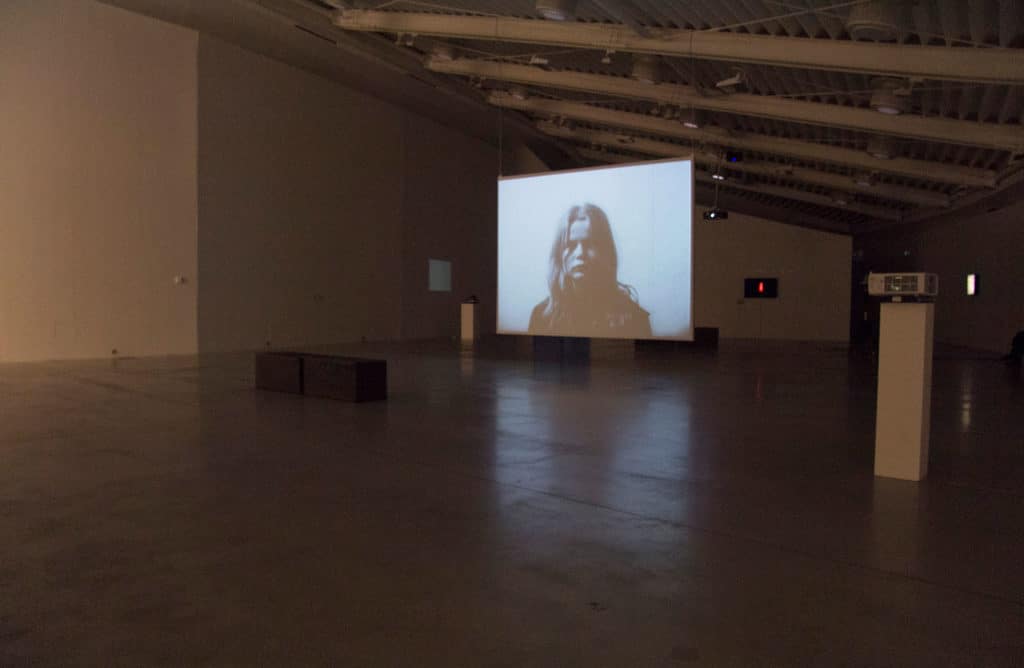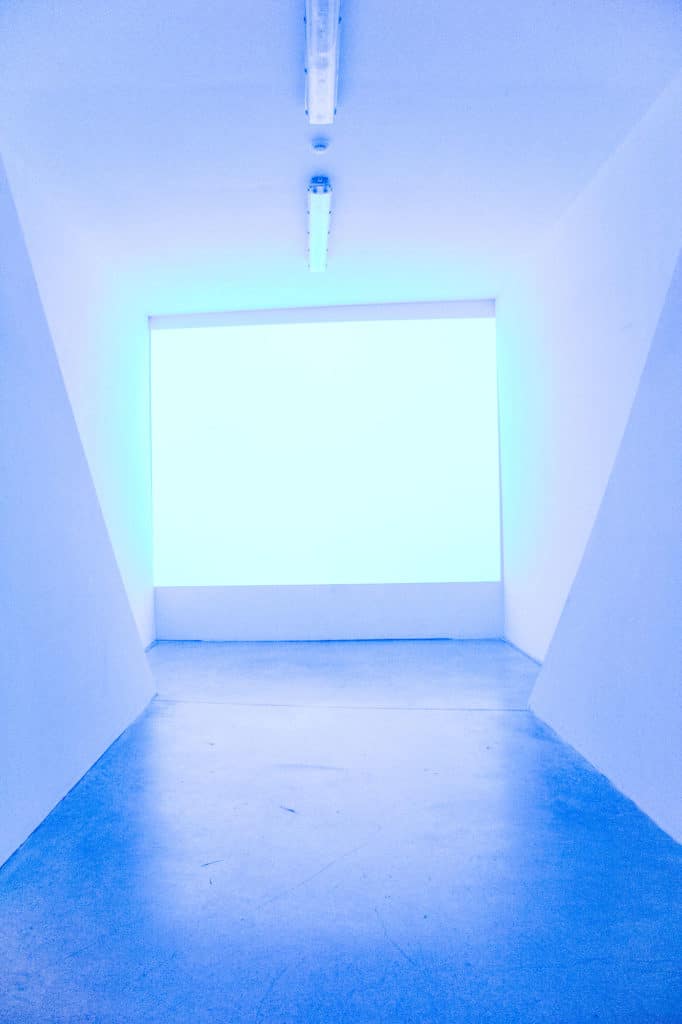After years spent in chaos behind the “iron curtain”, only for the past thirty years has Poland flourished in the international art market. The term ‘iron curtain’ was coined by Winston Churchill as the boundary dividing East from West, and it underlines the effort the Soviet Union put in making the border impenetrable. This resulted in the creation of parallel cultural universes. West went simply, openly forward, in a casually capitalist manner, whereas East, at the same time, remained full of quirky, unclear situations, abstract realities and dramatic pauses. Needless to say, the process above inhabited a natural, healthy, cultural and commercial development.
But art finds its way out. Moreover, it happened to be an important catalyst, one that not only helped people survive or simply transform the misfortune into a more bearable event. The creation of art, seen as a movement, is actually at its best when facing neglect. Józef Robakowski – the pioneer of the so-called “expanded cinema” and “personal cinema”, together with his colleagues from the Workshop of the Film Form, fixed their presence in Poland under the communist regime, leaning on the theories elaborated diligently in their group’s manifesto. It was constructed in opposition to the political system, which was first and foremost an intolerably intrusive propaganda embedded in Polish cinema of the time. But theirs wasn’t a loud and noisy objection. On the contrary, the artist’s voice was thoughtful and surprisingly silent about his exact subject. As Robakowski stated: “The only way to be political was to be totally apolitical”.[1] So there were no protests, no manifestations, and no scandals. Nevertheless, a subtle, meaningful message that still expands in meaning over time is an essential point of their turbulent activity.
Although the structural film might be an illegible message for the inexperienced viewer, the further in time we get from the core of the socio-political problem, the better we are able to observe the mental stuffiness that people were forced to live in. And that is, by force, exposed through the filmic medium utilized by the artist. Nowadays, it seems that we have come to the right moment in history, thirty years after the beginning of their activity, to finally unlock these essential enigmas in a more psychological and less socio-political way.
Józef Robakowski’s first retrospective took place between October 14, 2017 and January 28, 2018 at the Centro per l’Arte Contemporanea Luigi Pecci in Prato, Italy. Although the artist is well known in Poland, he is a stranger to the rest of the world. Enough to say that the audience isn’t as familiar with him as they are with Bruce Nauman. Notably, both artists took almost the same artistic steps, at the same time, on the other parts of the globe. And when I say “steps” I literally mean “footsteps”. Fabio Cavallucci, the director of the gallery in Prato, is earnestly committed to Polish art of that time, “In Poland, what’s fascinating is that in the nineties art was created without any market. That’s a proof that the creation of art is the primary impulse of a man which doesn’t depend on the market. In the West there wouldn’t be Damien Hirst without Saatchi, Michelangelo and Raphael without Popes and Medici. In Poland in the nineties artists didn’t think about selling their works. Their need to create had such a strength that the audience reacted to it”.[2] Moreover, he compares “Idę” (I’m going, 1973), a well-known video by Robakowski and “Walking in an Exaggerated Manner (…)” (1967-1968) by Bruce Nauman, underlining the collateral existing phenomenon in art. Remarkably, the political barriers and the artificially established lack of communication between countries didn’t manage to withhold common ideas from floating through the planet.
The oeuvre of Józef Robakowski is inestimable, and his fugacious presence in the Italian art scene was noticed with attention. Needless to say, there was no important art magazine which wouldn’t mention his strong showing in the Tuscan gallery. As Adam Mazur writes, “Everything that Robakowski does looks extremely serious. Anyway, it’s not just about what he does. Robakowski himself, his size – even physically – may not overwhelm the interlocutor, but certainly outshine and intimidate him”.[3] In Poland, the art from just before the launch of capitalism was undoubtedly intense and firmly grounded within its pioneering concepts. When the enemy is monstrous (personified in this case as a sturdy political system), you need to get yourself an iron armor. A strong and adamant personality to carry out the performance would do no harm either. And this is where our heroes enter.
What Robakowski and the Workshop of the Film Form proposed, were two interweaving concepts – “expanded cinema” and “personal cinema”. “Expanded” means embodied in various forms, exceeding the solitary visual mode. “Personal” signifies that it was utterly dependent on the artist, an authorial record of himself. Today we would have called it psychological. “Thanks to Robakowski, Polish cinema has broadened its borders and deepened its relations with art, becoming performance, poetic composition, [and] conceptual work.”[4] writes Niccolò Lucarelli in Artribune, commenting both on the recent exhibition and the overall idea of Robakowski’s work. In a sense, it also led to a “personal cinema”, as noticed by Cavallucci, “But the openness of an «expanded cinema» induced, by the way, the interest in a more intimate point of view”.[5] The exhibition is entitled “Nearer-Farther”, which is also the title of one of the artist’s works. The curator, Bożena Czubak, is engaged in a long-term commitment to the artist’s opus. She has been presenting his works in Polish galleries for many years already, including a huge display of “My own cinema” (2012) at the Center for Contemporary Art at Ujazdowski Castle in Warsaw. Czubak is a historian and an art critic, the author of numerous publications on contemporary visual culture, a member of The International Association of Art Critics (AICA), and the president of the Profile Foundation in Warsaw. Simultaneously with the exhibition of Józef Robakowski in Prato, she is curating “Paintings Alive” by Krzysztof Wodiczko at the Profile Foundation. In the article on “My Own Cinema”, she says that Robakowski formulated the concept of his “own cinema”, where he proposed his own scenario of perceiving the reality of life under communism. His own strategy of privacy assumed, indeed, the proportions of political gesture.
Confronted with escalating obstacles, faced with cultural isolation, a path once struck by artists only strengthens with time. “Let’s film EVERYTHING and it will turn out that we are forever only on the screen: his posture resembles yours, yet his character and personality differ. It is extremely interesting that one can carry on a polemic with oneself via the screen. Go on filming, and carefully observe yourself, critically, with the full awareness that YOU, on the screen, are greater than in nature, since von have a greater facility in the remembrance of past tune. Finally, also take it into consideration that your memory often becomes the memory of those watching Your films”.[6] (1981) A well-known excerpt of what Robakowski elaborated through his theories, means neither more nor less than the fact that even the most abstract and ostensibly mechanical actions, are, in fact, covering so much more, and that it could all be revealed only if displayed within the appropriate context. In this case, the meaningful socio-political base is a superpower, which accurately explains the track of the artistic decisions taken by an artist and only afterwards confirmed in time. It also shows that this knowledge not only broadens one’s view, it unquestionably deepens it by making a viewer acknowledge both the subject and the personality of the artist himself.
Józef Robakowski (born on February 20th, 1939 in Poznań) – Polish contemporary artist; photographer, film director, creator of paintings, installations, photography cycles, and performances; art theoretician, participant of an independent artistic movement in Poland; co-founder of the Workshop of the Film Form, and currently a professor at PWSFTViT in Łódź.
[1] https://www.centropecci.it/en/exhibitions/ja-zef-robakowski
[2] http://www.wysokieobcasy.pl/wysokie-obcasy/1,96856,9401006,Dyrektor_CSW_Zamek_Ujazdowski.html
[3] http://robakowski.eu/tx43.html
[4] http://www.artribune.com/arti-performative/cinema/2017/12/mostra-jozef-robakowski-centro-pecci-prato/
[5] „Nearer-Farther” – katalog do wystawy














